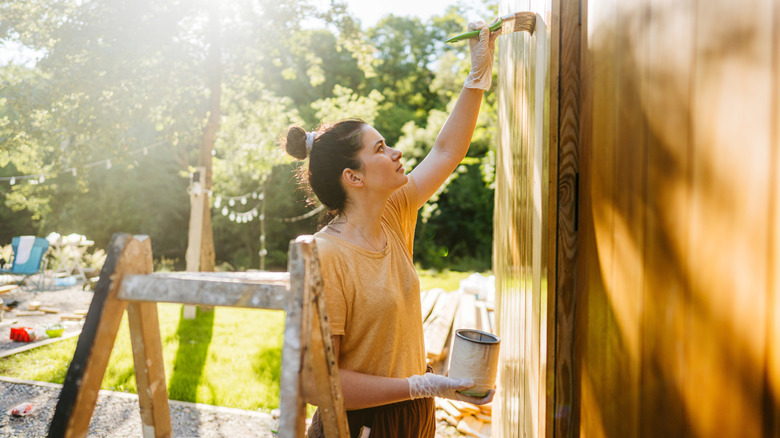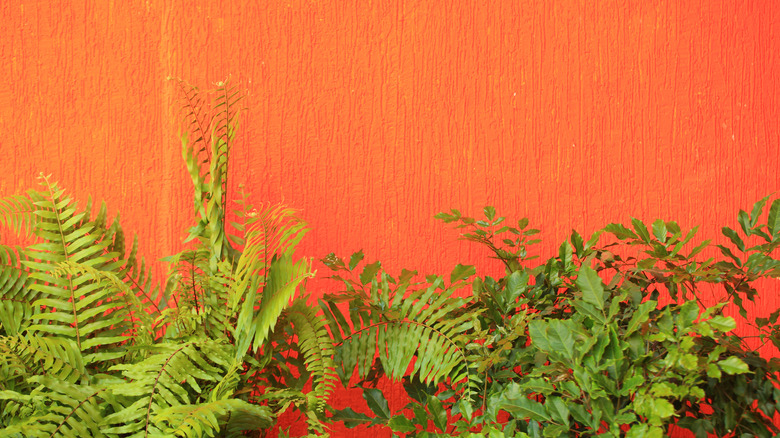A Paint Project Is The Easy & Affordable Way To Spruce Up Your Backyard
You've decided to give your backyard a makeover, but rearranging your potted plants, adding lights to your backyard patio, or repositioning your outdoor furniture doesn't seem to be making as much of an impact as you'd hoped. It may be time to take a big leap with a backyard paint project.
Before you get spooked by the possibility of making big painting mistakes, rest assured we aren't talking about a full-on home painting project, but only painting your home's back facade. You'll be surprised at how the simple act of painting a single wall a different color from the rest of your home can immediately spruce up your backyard's overall look. All it takes is committing to a color that best sums up your vision and aesthetic.
Before you start painting that exterior wall like a pro, you should choose a paint color that will best highlight your backyard and bring out its full potential. If you aren't up to painting an entire facade, you can opt to cover only a small portion of your back wall, focus on an exterior feature like an outdoor chimney, or simply tackle your backyard fences with a paint job. Either way, you'll end up with similarly transformative results. The versatility of this project is what makes this makeover a breezy and enjoyable task, not to mention an affordable one.
Choose a color to match your vision
A small backyard will greatly benefit from a plain white wall, which will immediately foster a sense of spaciousness. Propped against this blank canvas, your existing plants and furniture will be sure to pop out. Similarly, a green-colored wall will seamlessly blend with your garden's existing plant life, or compensate for a lack thereof. If you're looking for a minimalist, contemporary look, experiment with black. A black wall will become a dramatic and elegant backdrop to colorful plant life, shrubbery, and outdoor furniture, especially when paired with appropriate outdoor lighting. Dark colors are also forgiving of any flaws your wall may have.
Choosing blue visually opens up a small space by referencing natural elements, like the sea or the sky. Select a darker shade of blue to curate a moody ambiance or a lighter one for something more cheerful. Meanwhile, warm, neutral colors, such as brown or taupe, will marry well with natural garden elements, like stone paths or wooden fences.
Finally, don't be afraid to experiment with loud, striking shades of pink or yellow to create a funky and playful accent wall. These colors will not only play off your garden's natural environment but also serve as a natural conversation starter during garden parties.

